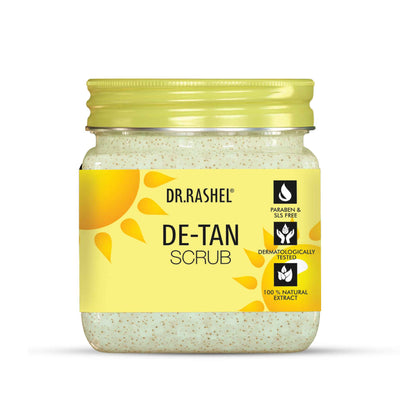
Table of Contents
- Know Your Skin Type
- Best Face Wash Ingredients for Each Skin Type (2025)
- Common Mistakes People Make While Choosing a Face Wash
- Final Note
- FAQs on Choosing Face Wash
A face wash is the first - and often the most important - step in any skincare routine. It’s what stands between your skin and everything it faces every day: dust, oil, sweat, and pollution. But here’s the truth: the wrong face wash can do more harm than good.
Many people think that all face washes are the same, but that’s far from true. A cleanser that works wonderfully on oily skin might leave dry skin irritated, while one that comforts sensitive skin may not deep-clean oily pores.
Choosing the right face wash isn’t just about what looks good on the shelf; it’s about understanding your skin’s unique needs and supporting its natural barrier.
By the end of this guide, you’ll know how to identify your skin type, what ingredients to look for, and how to find a cleanser that keeps your skin healthy, balanced, and glowing every single day.
Know Your Skin Type
Before buying a face wash, you need to know what kind of skin you have. Your cleanser should balance your skin - not dry it out or make it oilier.
How to Identify Your Skin Type?
- Oily Skin: Shiny forehead, nose, and chin; visible pores; prone to acne and blackheads.
- Dry Skin: Tight or rough feel; flaky patches; looks dull after cleansing.
- Combination Skin: Oily T-zone but dry or normal cheeks.
- Sensitive Skin: Prone to redness, itching, or burning after products.
- Normal Skin: Feels balanced - not too oily, not too dry - with minimal breakouts.
Knowing your skin type helps you choose a cleanser that complements, not conflicts with, your skin’s natural chemistry.
Best Face Wash Ingredients for Each Skin Type (2025)
For Oily or Acne-Prone Skin
If you have oily or acne-prone skin, your main goal is to control excess sebum production without over-drying your face. The right face wash should deeply cleanse your pores while maintaining your skin’s natural balance. Look for lightweight, gel-based cleansers enriched with ingredients such as salicylic acid, which exfoliates dead cells and prevents clogged pores, or niacinamide, which reduces inflammation and shine. Other soothing botanicals like tea tree or green tea extract also help purify the skin and minimize acne-causing bacteria. Avoid thick, creamy cleansers or alcohol-based products, as they can make your skin feel tight initially but trigger rebound oiliness later.
For Dry Skin
Dry skin craves hydration and comfort. If your skin feels tight, flaky, or rough after washing, your cleanser might be too harsh. Choose a face wash that adds moisture rather than removing it - one that feels creamy or lotion-like in texture. Ingredients such as hyaluronic acid, ceramides, aloe vera, and rice water work beautifully for dry skin because they help restore the lipid barrier and lock in hydration. These ingredients attract and retain water in the skin, keeping it soft and supple after cleansing. Stay away from sulfates, alcohol, or heavily fragranced products, as they can make dryness worse.
For Combination Skin
Combination skin can be tricky to manage because it behaves differently across your face - the T-zone (forehead, nose, chin) tends to get oily, while the cheeks may stay normal or even dry. The goal here is balance: a cleanser that effectively removes oil from certain areas without over-drying others. Gel-based or light foaming cleansers with vitamin B5 (panthenol), hyaluronic acid, or fruit enzymes work wonderfully to balance moisture and sebum levels.
For Sensitive Skin
Sensitive skin needs care, not intensity. The goal is to protect your natural barrier and prevent irritation from harsh chemicals or fragrances. Always go for fragrance-free, hypoallergenic, and sulfate-free cleansers. Gentle, soothing ingredients such as aloe vera, rice extract, chamomile, and oatmeal can calm redness and irritation. A mild gel or creamy texture works best, producing little to no foam. Avoid citrus oils, menthol, and physical scrubs that can aggravate sensitivity. After washing, your face should feel calm and hydrated - not hot, red, or tight.
For Normal Skin
If you have normal skin, you’re one of the lucky few with balanced oil and hydration levels. Your goal is simple - maintain this balance without disturbing it. Choose a gentle, refreshing cleanser that cleans effectively but remains non-stripping. Ingredients like vitamin C, rice water, and botanical extracts are perfect for maintaining natural radiance and preventing buildup. You can comfortably switch between a light gel or foam depending on the season, as long as it leaves your skin feeling soft and healthy. Avoid over-cleansing or switching products too often, as stability is key to keeping normal skin glowing and youthful.
Common Mistakes People Make While Choosing a Face Wash
- Choosing by brand popularity or scent, not by ingredients.
- Assuming more foam equals better cleaning.
- Ignoring the pH level or sulfate content.
- Using the same cleanser year-round, even when your skin’s needs change.
- Forgetting to moisturise after cleansing.
Final Note
The truth is, gentle cleansing is not just effective - it’s smart. Whether your goal is to hydrate, brighten, balance oil, or calm irritation, your face wash should enhance your skin’s natural beauty without overdoing it. Overwashing can leave your skin stripped and vulnerable, while under-washing can leave impurities behind, causing breakouts and dullness.
FAQs on Choosing Face Wash
How to choose the correct face wash?
To choose the right face wash, you need to consider your skin type, concerns, and goals. If you have oily skin, look for oil-control cleansers with ingredients like salicylic acid or tea tree oil. For dry or sensitive skin, choose hydrating or cream-based cleansers with ingredients like ceramides or aloe vera.
How do I know if my cleanser is right for me?
A good cleanser will leave your skin feeling clean but not tight or dry. If your skin feels irritated, dry, or overly oily after cleansing, your face wash might not be the right fit. Ideally, your face should feel soft, refreshed, and balanced - not stripped or uncomfortable.
Which cleanser type is best?
The best cleanser depends on your skin type. For oily or acne-prone skin, gel-based or foaming cleansers work best. For dry or sensitive skin, a cream-based or milky cleanser with soothing ingredients is ideal. Normal skin can use almost any type, but gentle gel cleansers are often the most effective.
What is the first step in a skincare routine?
The first step in any skincare routine is cleansing. It removes impurities, excess oil, sweat, and makeup, preparing your skin to absorb the active ingredients in the next steps, like toners, serums, and moisturisers. Cleansing sets the foundation for the entire skincare routine.
Which face wash is best for all skin types?
A gentle, hydrating cleanser works best for all skin types. Look for products that contain hyaluronic acid, glycerin, or rice water to maintain moisture balance. A mild gel-based or cream-based cleanser is typically suitable for oily, dry, and combination skin, as long as it’s pH-balanced and free from harsh ingredients like sulfates.
What are three types of face washes?
- Gel cleansers: Great for oily and acne-prone skin, as they help control excess oil and provide a deep clean.
- Cream cleansers: Ideal for dry and sensitive skin, as they hydrate while cleansing and don’t strip natural oils.
- Foaming cleansers: These give a rich lather, perfect for people with oily skin or those looking for a deep, refreshing cleanse.
Which face wash is best for Indian skin?
For Indian skin, which is often exposed to pollution, humidity, and sun, look for mild, hydrating face washes with antioxidant-rich ingredients like vitamin C, rice water, or green tea. These ingredients help protect against environmental damage and keep your skin clear and glowing.
Can I use a face wash to remove makeup?
While face washes can remove light makeup, they aren’t formulated to thoroughly dissolve makeup and sunscreen. For full removal, it’s best to start with an oil-based cleanser or micellar water to break down makeup and then follow up with a face wash to clean deeper into your pores.
Can I use the same face wash on my neck and chest?
Yes, you can use the same face wash on your neck and chest, as these areas are exposed to the same environmental factors as your face. However, be gentle and use a hydrating or mild cleanser, as the skin on your neck and chest is thinner and may be more sensitive than your face.
How can I tell if my face wash is too harsh?
If your face wash leaves your skin feeling tight, dry, or irritated, it may be too harsh. Your skin should feel fresh and clean, but not stripped. Overly foamy or sudsy face washes, especially those with sulfates, often cause this feeling of tightness. If you experience redness or discomfort after washing, it’s time to try a gentler formula.







